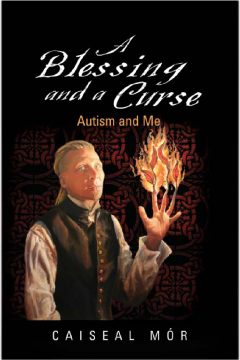
Additional Information
Book Details
Abstract
Growing up in Australia in the 1970s, Caiseal Mór was labelled `retarded' and `an idiot', and his parents were led to believe that physical punishment could cure his autism.
In this courageous and captivating autobiography, Mór vividly captures his early experiences of dissociation from his true existence - a common reaction by children suffering from repeated abuse - and the various personas through which he lived through in his teens and early adulthood - the Mahjee, Charles P. Puddlejumper, Marco Polo and Chameleon Feeble. The rocky path towards discovering his true identity and finally accepting himself takes him on a spiritual pilgrimage via several different countries, once nearly getting caught unwittingly carrying drugs over the Moroccan border; forming relationships with people he meets but very often misjudges; to the revelation - the awakening - of love and acceptance.
Caiseal Mór is the well-known author of two non-fiction books, twelve fantasy novels, including the Wellspring and Watchers trilogies, and the composer of six accompanying musical CDs. He lives in Australia with his wife.
`His book captures the nostalgic romanticism of the Australian bush in the 1960s but also the height of deep ignorance and the culture of `see no evil' in which almost all who could and should have changed things, looked the other way... Caiseal's book is as beautiful and magical as it is shocking.'
From the Foreword by Donna Williams
Table of Contents
| Section Title | Page | Action | Price |
|---|---|---|---|
| Prelims (Preface, Foreword - Ravi Kanbu, Contributors) | |||
| 1. What works for the poorest? | |||
| David Hulme and David Lawson | |||
| Part A: Creating knowledge about the poorest | |||
| 2. Pro-poorest growth: A National Household Survey Approach | |||
| Umar Serajuddin, Hassan Zaman and Ambar Narayan | |||
| 3. A ‘Q-squared’ approach to enhancing our understanding of the chronically poor | |||
| David Lawson | |||
| 4. Alternative accounts of chronic disadvantage: Income deficits versus food security | |||
| Naila Kabeer | |||
| Part B: Targeting the poorest | |||
| 5. Identifying and targeting the extreme poor: A methodology for rural Bangladesh | |||
| Binayak Sen and Sharifa Begum | |||
| 6. Testing combined targeting systems for cash transfer programs: the case of the CT-OVC programme in Kenya | |||
| Carlos Alviar, Francisco Ayala and Sudhanshu Handa | |||
| 7. Institutional issues in scaling up programmes for the health needs of the very poor | |||
| Hilary Standing and Elizabeth Kirk | |||
| Part C: Policies and programmes for the poorest: case studies | |||
| 8. Eradicating extreme poverty: The Chile Solidario programme | |||
| Armando Barrientos | |||
| 9. Assisting the poorest in Bangladesh: Learning from BRAC’s ‘Targeting the Ultra Poor’ Programme | |||
| David Hulme and Karen Moore | |||
| 10. Unconditional cash transfers to the very poor in central Vietnam: Is it enough to 'just give them the cash’? | |||
| Peter Chaudhry | |||
| 11. Exclusion to empowerment: Women of the Siddi community in Gujarat, India | |||
| Somnath Bandyopadhyay, Apoorva Oza and David Nygaard | |||
| 12. The NREGA and rural women in poverty: Entitlements, issues and emerging concerns | |||
| Rina Bhattacharya, Meera Pillai and Ratna Sudarshan | |||
| 13. Strategies for promoting decent contract labour: Experiences from South African and UK agriculture | |||
| Stephanie Barrientos | |||
| 14. The role of health equity funds in meeting health-related needs of the poorest in urban areas of Cambodia. | |||
| Chean Rithy Men and Maurits Van Pelt | |||
| Part D: Making it work: finding the money and spreading the knowledge | |||
| 15. Linking microfinance and safety net programmes: New pathways for the poorest | |||
| Syed Hashemi and Malika Anand | |||
| 16. Revenue mobilization for poverty reduction: What we know, what we need to know | |||
| Tony Addison | |||
| 17. Making poverty reduction programmes work for the poorest | |||
| David Hulme and David Lawson | |||
| Back Matter (Index) |
